Description
CHAPTER ONE INTRODUCTION
1.1 Background to the Study.
This research is on Impact of projected still visuals on the academic performance of junior secondary school students in social studies in Zaria inspectorate (educational) division in Kaduna state. Education has been identified as the aggregate of all the processes and means by which a person develops abilities, attitudes and other forms of positive behavior and value in the society in which he or she lives, (Ikporukpo 2001). Ndagi (2001) added that, school is not just a place where children/student acquire education, the school provides an environment that is suitable for the proper development of the learners when in school so that they can become good members of the society.
Also the school provides the teachers the opportunities to perform their numerous but crucial roles in the teaching and learning process. Junior secondary school level is an important level in our educational system; this is the period which Gambari (2003) describes as transitional stage, from concrete to abstract. From this stage, the students have started developing social concepts, perception and appreciable amount of abstract thinking.
Jega (2002) therefore, note that teachers need to know the resources for learning that their students will use and that can influence the effectiveness of instructional programmes. However, creative uses of variety of media will increase the probability of students’ learning by helping them to retain better what they learn, and improve their performance of skills they are expected to develop. Long before they learn to talk or interact selectively with people and objects around them, babies store up visual images that are meaningful to them. For example when they see their mothers warm their bottles or move their high chairs close to the table they know that food is coming and respond accordingly.
Students learn to interact more effectively when learning take place through the use of projected still visual. Omoteyo (2001) stated that projected visual materials demonstrate skills and attitudes during teaching/ learning process. Meziobi (2003) revealed that, the application of projected instructional visuals in teaching has been found to enhance instructions. Today, projected visuals are highly rated worldwide to be of great value in the teaching and learning process. Meziobi (2003) adds that, there are still a large number of instructors or teachers who have not yet fully comprehended and appreciated the value of projected visuals in realizing the objectives of education. He also says that, many of them find it difficult to handle still- projected materials in the teaching/learning situation and proceed to teach using the outdated expository method.
Umar (2004) stated that projected still visual materials are important and useful in the teaching /learning of social studies. Ughamadu (2003) described projected still visual materials as a form of media which could be visual, audio or audio-visual in nature that requires projection and electricity in their process for teaching and learning situation. Still Projected visuals are instructional materials that summarize information and ideas through overhead projector, computer images, sound slide sets, multi–image presentations, filmstrips, opaque projections to name a few. Patrick (2000) notes that,most students are initially less familiar with projected visual than they are with flat pictures. They are valuable means of communicating certain information.
Projected media generally have been found to aid the teacher and the learner by providing visual, audio information. They are aimed at supplementing and improving teaching and learning. The use of projected media attracts inputs from the teachers and the students; however they are not intended to end the work of teachers. According to Haruna (2000), projected media are information–carrying technologies that are used for instructional purposes and aimed at delivering educational instruction very quickly and vary widely. The use of projected media increases the rate of learning by providing worthwhile experiences for learners that teachers need not or cannot furnish. According to Orji (2005) projected still visuals give instruction a more scientific base through providing a framework for systematic instruction planning.
The method required by the teacher to make the teaching of social studies effective requires that the teacher should be very resourceful. Orhungur (2001) supported that the way to do this is for the teacher to engage in human capacity building process which will involve the use of variety of strategies and techniques in his teaching. For these reasons, social studies need various components like projected visual aids that will help in optimum zing his or her teaching/learning processes.
Omobola (2001) observed that the use of verbalization method of teaching social studies over the years has not made the subject very interesting. In fact, the need for effective teaching and learning of the subject cannot be over emphasized. Teachers’ method of teaching is also identified as a major factor affecting classroom instruction, (Oke and Jekayin 2003). However, Margreaues, Carl, Shawn and Menning (2001) are of that opinion, that poor teachers’ method of teaching hinders understanding. Joyce and Showers, (1995), observes that, teachers still use mainly traditional methods of teaching which lead to poor students understanding and performance of the subject. Ndak (2003) posits that social studies like other subjects can be effectively taught by employing variants of instructional media that appeal to the three senses – sight, sound and hear. More so, the continuous falling standard of education has been a major concern to parents, the government and other private stakeholders.
Among the numerous possible factors affecting the effective teaching and learning outcome in local schools today may be the use of poor teaching strategies. However, Social Studies as a major subject offered from primary schools to tertiary institutions, enables students acquire foundational knowledge about citizenship education and culture. Teachers’ method of teaching is also identified as a major factor affecting student’s interest and motivation in the classroom instruction.
Today, the use of projected visual and audio-visual materials has shown/appear to facilitate effective communication and transfer of information, knowledge, skills and attitudes. Azubuike and Obianmu (1994) added that visual and audio-visual materials contribute to students’ understanding, factual learning, and permanence of learning habits and skills, motivation and interest and so on. Obianwu (1994) clearly illustrates how the use of media (simple visual materials) facilitates and ease better understanding information with better view of images and general sharpening of intelligence. It is clear that projected visual and audio-visual materials are powerful tools that improve the quality of teaching and learning. The teachers do not have to rely on verbal means only, the use of visuals or audio-visuals materials can be applied in the teaching/learning situations of social studies. Topics to be taught are stated in teaching family system, means of Transportation system, Pace and Conflict, National Economy and Children Trafficking.
According to Edith (2001), for learning to be meaningful and effective, learners must be sufficiently motivated. Therefore, it is logical that insufficient, non-availability and improper use of instructional media can negatively influence the academic performance of the students. This is because the advantages and contributions of projected visuals would be lacking. These advantages include motivating, aiding learning and awakening students’ active participation in the learning process and diversifying sensory appeal modalities.
Clement (1998) reports that, where instructional materials are properly utilized and appropriately matched to specific is learning objectives, learners’ characteristics and the structural properties of the learning task, perception, understanding, transfer of training, recall and retention can be enhanced. Suffice to say that properly utilized available instructional media “can promote academic performance and can give to learners increased conceptualization and understanding that is more than they usually gains from mere verbal explanation (Gambari, 2003).
Also Olumotanmi (2000) indicated that there is a great gap between the teachers, what they teach and the content of teaching. Teaching goes on in most classrooms with little learning taking place and one of the subjects that are seriously affected is social studies. The gap between teaching and learning continue to get wider every day and there is need for it to be bridged. One of the means to bridge the gap is through the effective use of instructional materials. Gambari (2003) further argued that, audio-visual materials are relevant to education because it is now known that learning is a complex affair and teaching is precarious venture. This means that for any meaningful teaching and learning to take place at junior secondary school levels of our educational system, effective use of instructional materials is of paramount importance.
Abolade (2004), further states that studies have shown that out of the five (5) sense organs we use for acquiring knowledge, use of the eyes or visual take up to 80% in the learning process, while audio take 11% and factory, tactile and tasting takes 9%. Therefore, it is stated that Audio – visual instructional materials have made education more qualitative, quantitative and meaningful because they have produced desirable results.
In this study, therefore, emphasis is accorded to the use of different visual imagery in facilitating students learning of social studies in junior secondary schools. Oke and Jekayinfa (2003) observes that the lack of effective utilization of instructional media by social studies teachers in teaching the subject at the junior secondary school level has been one of the factors responsible for poor students’ performance in the subject. Alaba (2001) revealed that out of 1,347 students who sat for Social Studies at Junior Secondary School Certificate Examination at Lagos African Church Grammar School, Ifako Lagos in 1999, only 423 passed the subject.
This study therefore investigate the impact of projected still visuals on the academic performance of Junior Secondary Schools Social Studies students. According to Alaba (2001) projected visuals are all those devices like, machines and materials which can be used by educators to present a complete body of information in the teaching and learning process for a more effective instruction. Therefore, the teacher can get his message across to the students and the students on their part are motivated and become eager to learn. They focus their full attention on the lesson and assimilation is the result.
1.2 Statement of the Problem
Projected Visual materials are used in the teaching and learning process in order to aid easy assimilation of concepts which are abstract and very difficult to understand. It is obvious that a larger part of the teaching enterprise is devoted to helping students understand and define concepts. Research evidence in social studies Education in Nigeria points to the fact the teaching and learning of social studies in schools require urgent attention. Unfortunately certain variables in the school make it difficult for this main objective to be achieved. Due to such variables, impact of availability, accessibility and the academic performance among junior secondary school social studies students is generally poor as they often forget what they have being taught, over the decades. For instance lack of proper utilization of projected still visuals might have led to the problem of teachers viewing themselves as not well prepared to utilize projector in the classroom, in spite of taking part in staff development programmes relating to projected still visuals materials.
1.3 Objectives of the Study
The aim of this research to determine the impact of projected still visuals on the academic performance of junior secondary school students in social studies in zaria Inspectorate (educational) division in kaduna state. The specific objectives are therefore stated, thus:
- i. Determine the impact of projected still visual materials on academic performances of JSS social studies student in Zaria Inspectorate (Educational) Division, Kaduna State.
- ii. Determine the difference in the impact of projected visual between (male and female) among JSS social studies students academic performance in Zaria Inspectorate (Educational) Division, Kaduna State
iii. Determine the impact of JSS social studies students’ academic performance when taught using projected visual material and Traditional lecture method.
- iv. Determine the impact of projected visuals in academic performance of JSS Social Studies experimental and the control groups as a result of school type (mixed and single/urban and rural) in Zaria Inspectorate (Educational) Division, Kaduna State.
1.4 Research Questions
- i. Is there any impact of still projected visual material on academic performance of JSS social studies students in Zaria Inspectorate (Educational) Division Kaduna State?
- ii. To what extant does projected still visuals affects students academic performances in JSS social studies in relation to their gender?
iii. To what extant dose JSS social studies students’ academic performance differ when taught using projected visual material and Traditional lecture method?
- iv. Is there any significant impact of projected visual in academic performance of JSS Social Studies experimental and the control groups as a result of school type (mixed and single/urban and rural) in Zaria Inspectorate (Educational) Division, Kaduna State.
1.5 Basic Assumptions
For the purpose of this study, the following assumptions were made:
There are convincing evidences that students learn more effectively when projected still visual materials are employed. Its use motivates students who have been disillusioned with education (Patrick, 2000). Orji (2005) it follows therefore that in social studies learning, responding, enquiry and seeking answers to day – today’s problems the use of projected still visual materials cannot be over emphasized. Thus, it has become necessary that research efforts be divested towards impact of Availability, Accessibility, and Utilization of projected visual materials in secondary schools of Nigeria, with a view in suggesting steps necessary to compare and minimize the problem.
To this effect, the study will investigate the impact of projected still visuals materials in learning Social Studies concepts among Junior Secondary Schools students in Zaria inspectoral (Educational) Division Kaduna state.
The effective usage of projected still visual could enhance the academic performance of junior secondary school student in social studies.
Projected still visual materials are integral part of teaching and learning materials used by social studies teachers in junior secondary schools.
It is assumed that all JSS students are well exposed to projected still visual materials. Projected still visuals materials are enriching form of instructional materials in JSS social studies.
1.6 Significance of the Study
The finding of the study will hopefully uplift the standard of social studies students’ performance in the following ways:
- i. Encourage curriculum planners to upgrade their methods of teaching Social Studies in the curriculum.
- ii. Enhance effective teaching /learning of Social Studies at Junior Secondary School (JSS) level.
iii. Educate the educational administrators on the need of providing projected visual materials for teaching and learning of Social Studies at Junior Secondary School level.
- iv. Enable the educational administrators and planners to appreciate the need for Social Studies teachers to be trained in the production and use of instructional materials.
- v. The research findings will also provide information for policy makers, government and statistical data on educational development generally.
1.7 Scope of the Study
This study is limited to Junior Secondary School (JSS) level students in Zaria inspectorate Division (Educational) in Kaduna State, Nigeria. There are twenty (20) Junior Secondary Schools, (JSS) with a total of Ten Thousand and Eighty Two (10,082) students in JSS in Zaria Inspectorate (Educational) Division, Kaduna State. But, for the purpose of this study, only government owned schools are considered. The choice of government owned schools is considered because both human and material resources are supplied centrally by the State Ministry of Education.

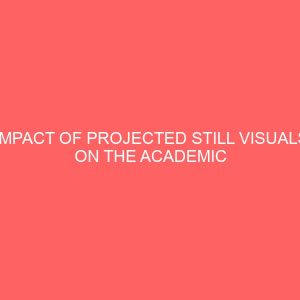
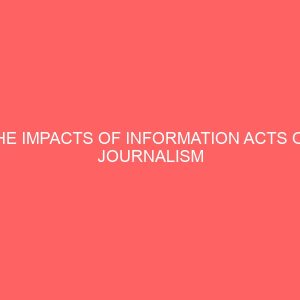


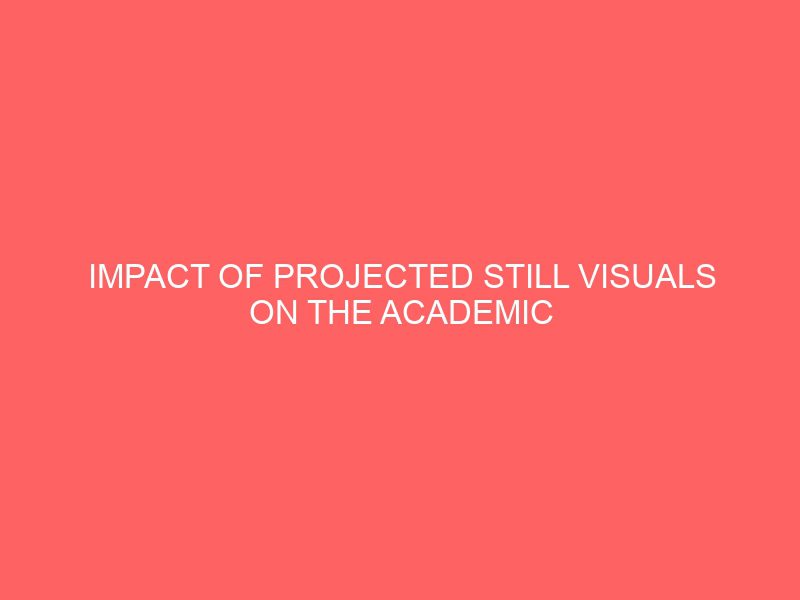
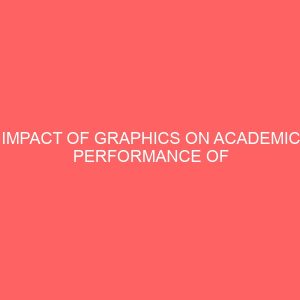
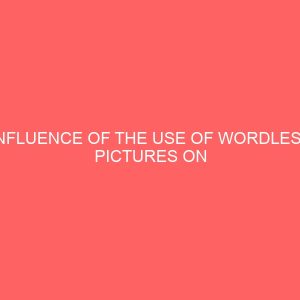
Reviews
There are no reviews yet.